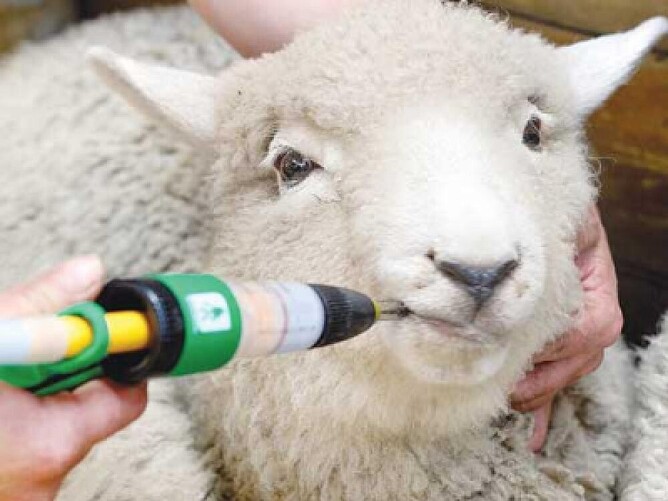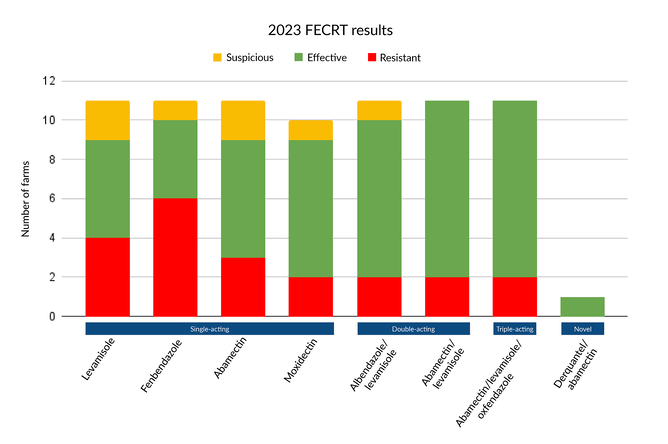Our latest FECRT results show some concerning trends.
Another faecal egg count reduction test (FECRT) season has come to a close and we have had some interesting and concerning results, showing continued high levels of resistance to triple combination drenches.
We performed 11 reduction tests in 2023 - three from the west and 8 from the east. Below is a graph showing the results:
As you can see, all of the farms tested three of the single-acting drenches, as well as both double-acting drenches and the triple drench. Ten of the farms also included moxidectin, which is a lot more potent than abamectin in the single-acting drench class. Only one farm tested the novel drench.
Overall, the combination drench products are still performing relatively well, with slightly better results recorded this season over last. However, the triple-acting results showed an alarming 18% of the farms tested are resistant, which equals last season’s results.
On top of those that showed triple resistance in the FECRT this season, we have also found a handful of farms with large numbers of eggs present on drench checks 10-14 days after a triple has been used. The majority of these resistance eggs are Trichostrongylus (small stomach worm), but we are also seeing some Ostertagia (medium/brown stomach worm) resistance coming through to the combos.
Managing drench resistance
Triple drench resistance is not a death sentence, but likely will involve some management practice changes. The farms above are working closely with their KeyVets to ensure we can get the best out of the situation.
Although these results cannot be extrapolated to your farm, even if you share a boundary line, they are a timely reminder of how important non-drench parasite management practices are.
Internal parasite tests broken down
We recommend performing at least 2-3 drench checks every season to ensure drench performance is holding on your property and then having a full FECRT every 3-5 years.
Pre-drench FEC test - We count the eggs present in faecal samples to get an indication of the number of adult worms residing in the host animals. This provides a snapshot of their worm burden, but results can be influenced by other factors. They can be a good starting point when forming a parasite management plan. We recommend doing a composite test - simply bring 10-20 samples into your nearest clinic, 10g per sample and one sample per bag. Our new Parasight FEC machines mean we can test your samples in-clinic and get your results to you the same day!
Drench check - We do a faecal egg count on faeces from drenched sheep about 7-10 days after they have been drenched. This provides a snapshot of their post-drench worm burden and can help to determine drench efficacy. However, inaccurate drenching can give inaccurate results, and this test also doesn’t take into account the pre-drench burden for comparison.
FECRT - A full FECRT compares the change in the faecal egg count before and after drenching to give you a more accurate indication of whether your drench is working. A FEC test is done before drenching, and then again around 10 days after drenching. You can test several mobs with different drenches to see which (if any) they have resistance to.
Parasite control is a huge topic and there is no set recipe that works for all farms. Your KeyVet will be more than happy to discuss all of your options with you and help to prepare a tailored plan for parasite management on your farm - just give them a call.


